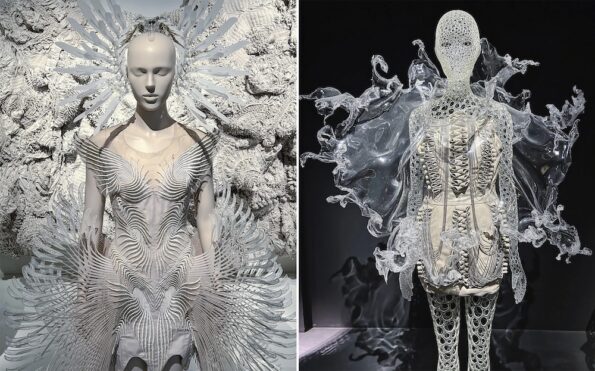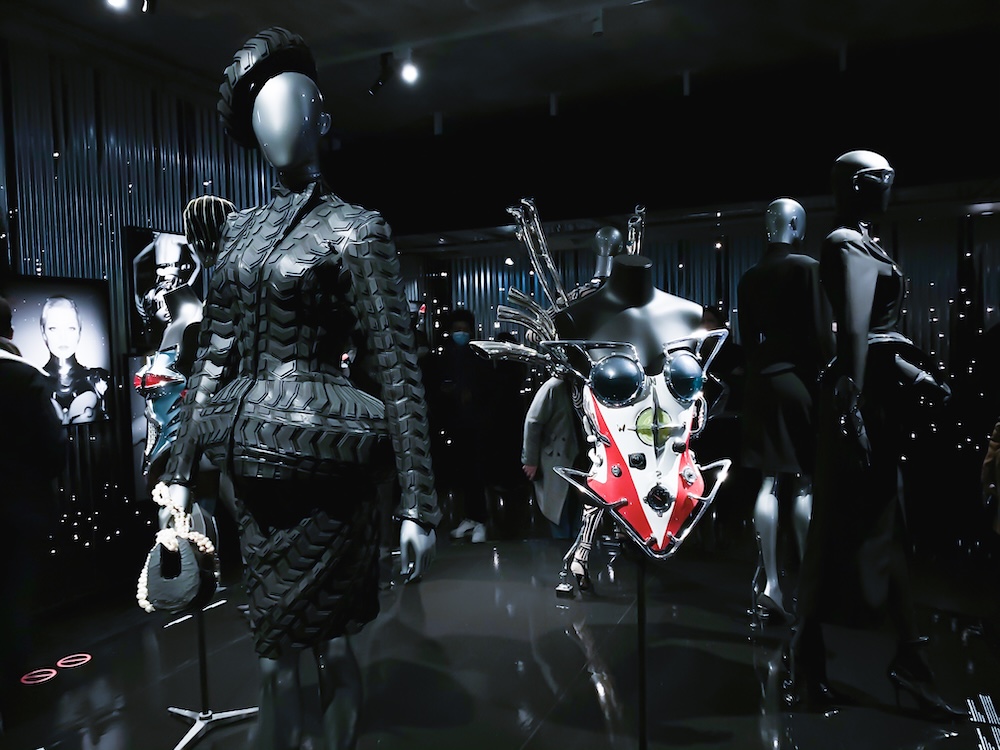Search
To search for an exact match, type the word or phrase you want in quotation marks.
A*DESK has been offering since 2002 contents about criticism and contemporary art. A*DESK has become consolidated thanks to all those who have believed in the project, all those who have followed us, debating, participating and collaborating. Many people have collaborated with A*DESK, and continue to do so. Their efforts, knowledge and belief in the project are what make it grow internationally. At A*DESK we have also generated work for over one hundred professionals in culture, from small collaborations with reviews and classes, to more prolonged and intense collaborations.
At A*DESK we believe in the need for free and universal access to culture and knowledge. We want to carry on being independent, remaining open to more ideas and opinions. If you believe in A*DESK, we need your backing to be able to continue. You can now participate in the project by supporting it. You can choose how much you want to contribute to the project.
You can decide how much you want to bring to the project.

For much of the 20th century, art viewed fashion with condescension, considering it a field linked to commerce, frivolity, and entertainment rather than critical or aesthetic reflection. Exhibitions about designers or brands were seen as pop concessions if not covert marketing campaigns. However, in the last two decades, things have changed radically. Fashion has not only conquered museums, but it has also fostered a new exhibition paradigm, where clothing dialogues with art, history, technology, and large cultural narratives. What was once relegated to the margins between design and media spectacles now occupies a central place in the world’s major museums.
Fashion has gone from trivial to transcendent within the museum, but this change has not been immediate. At the beginning of the 21st century, fashion exhibitions still generated doubts. Although there were significant precedents, such as the Giorgio Armani retrospective at the Guggenheim Museum in New York in 2000, these exhibitions tended to be perceived as flashy events that lacked curatorial depth. Glamour, sponsorship, and stars tended to overshadow historical or conceptual content.
The Armani exhibition was one of the first dedicated to a living designer at such a prestigious institution. Although it was not without controversy (the private funding resulting from the collaboration between the museum and the designer was criticized), it marked a turning point. That same year, the exhibition was shown at the Guggenheim in Bilbao, consolidating the beginning of a new era of institutional legitimization for fashion. Since then, the phenomenon has only increased.
New approaches soon emerged. The Met’s Costume Institute, first under the direction of Harold Koda and later Andrew Bolton, began to articulate more complex discourses about fashion, the body, gender, and politics. At the same time, museums such as London’s Victoria & Albert (V&A) and Paris’ Musée des Arts Décoratifs (MAD) launched retrospectives that blurred the boundaries between fashion, art, and visual culture, evolving from simple showcases of dresses to true curatorial experiments.
A clear sign of this transformation was the proliferation of museums dedicated exclusively to designers or maisons. In recent decades, spaces have emerged that not only conserve and archive but also reclaim fashion as cultural heritage. In addition to the Ferragamo Museum (1995) focused on footwear, Florence also houses the Gucci Garden (2011), a hybrid museum, concept store, and gastronomic experience. In Getaria, the Balenciaga Museum (2011) presents the Basque couturier’s work with a rigorous museum approach. Paris is home to several of these temples of design: the Musée Yves Saint Laurent (2017) located in his former atelier; the Azzedine Alaïa Foundation (2018), with exhibitions and residencies; and the Galerie Dior (2022), which offers an immersive experience. These venues make up a global cartography of fashion institutions that combine archives, scenography, and a cult to the creative process.
In addition, the capital of haute couture also boasts the Palais Galliera Fashion Museum, with iconic exhibitions such as the recent ones dedicated to Frida Kahlo’s wardrobe and Stephen Jones’ hats, transforming the fitting room into archives and discourse. Similarly, other established institutions in the city have promoted fashion as a museum discipline. The MAD museum has hosted some of the most influential exhibitions of the 21st century, such as the Christian Dior exhibition (2017), which broke attendance records, and the more recent exhibitions of Thierry Mugler, Schiaparelli, and the sublime anthology of Iris Van Herpen, which fused science, technology, and futurism in an absolutely avant-garde museum choreography

Exhibition Couturissime, Thierry Mugler at the Musée des Arts Decoratifs, Paris. Photography: Paco Arteaga
This model has inspired other institutions around the world. In London, the V&A has been organizing key monographs for years, such as Grace Kelly: Style Icon (2010), Balenciaga: Shaping Fashion (2017), Dior: Designer of Dreams (2019), and Mary Quant (2020). In the United States, the Met Costume Institute has established itself as a curatorial benchmark, thanks in part to the media boost of the Met Gala. Its most acclaimed exhibitions include Alexander McQueen: Savage Beauty (2011), which the V&A imported in 2015; Camp: Notes on Fashion (2019); Heavenly Bodies (2018); and the 2023 exhibition dedicated to Karl Lagerfeld. Combining education and exhibitions with academic rigor, the Museum at FIT in New York is another important center.
In Asia, where the luxury market is growing relentlessly, fashion museums have flourished with equal force. Japan houses the Kyoto Costume Institute, one of the richest collections of historical and contemporary clothing in the world. Also notable is the Shanghai Museum of Contemporary Art, which has presented major exhibitions of Chanel and Dior in Asia. In China and South Korea, contemporary art centers have incorporated fashion as an autonomous discipline, with exhibitions that mix textile tradition, technology, and streetwear. In Latin America, the Museo de la Moda in Santiago, Chile, exhibits one of the most unique private collections in the region.
Beyond the elite Euro-American and Asian circuit, curatorial proposals are also emerging from other geographies. In the rest of Latin America (Mexico, Bolivia, Peru), Africa, and South Asia, independent initiatives and community museums have begun to reclaim ancestral textile knowledge and popular expressions as legitimate forms of fashion. These approaches, less visible on the global map, contribute different epistemologies of fashion and archives.
Fashion has also burst into contemporary art through foundations linked to major fashion houses that are redefining the museum landscape. Underscoring luxury cultural patronage, the Fondation Louis Vuitton (2014) (designed by Gehry and sponsored by LVMH) has programmed works by Basquiat, Olafur Eliasson, Ellsworth Kelly, and David Hockney. The Fundación Cartier (1984), with its imminent relocation to the heart of Paris, is a pioneer in contemporary art and intercultural dialogue. The Bourse de Commerce (2021), with ties to the magnate François Pinault, occupies a central place in this constellation, not only because of its significant exhibitions, but because it represents the increasingly palpable interweaving of economic power, fashion, and art.
In Milan, the Prada Foundation (founded in 2015, with a branch in Venice, as well) transformed a distillery into an avant-garde museum complex with radical architecture. Just a few miles away, the Armani/Silos (2015), promoted by Giorgio Armani, exhibits iconic pieces and reflections on silhouettes, genres, and materials. Both spaces strengthen the link between the luxury industry and cultural legitimation, expanding the concept of the museum in the 21st century.
Recent exhibitions have also debunked stereotypes. It is no longer just about admiring dresses but rather understanding the body as an archive, clothing as a document, and the catwalk as performance. Museums showcase both historical costumes and provocative current creations. The Versace retrospectives, touring since 2018, reflect the audacity of the 1990s. The Malimo & Co. exhibition (Leipzig, 2011) demonstrated how fashion in the GDR exuded creativity and individuality despite the socialist system, using local materials and garments that revealed everyday life in East Germany.
In 2022, six institutions in Paris (the Louvre, the Orsay, the Pompidou, the Musée d’Art Moderne, the Musée Picasso, and the YSL Museum) paid an unprecedented tribute to French designer Yves Saint Laurent. Through a polyphonic journey connecting his designs with masterpieces from each collection, the city celebrated his transversal genius and his ability to engage with art history. Viktor&Rolf: Fashion Statements (2024) examined the intersection of haute couture and conceptual art of the Dutch duo at the Kunsthalle Munich.
Another highlight was the retrospective Gabrielle Chanel: Fashion Manifesto (2020), held at the Palais Galliera, which subsequently toured in Tokyo, Shanghai, New York, London, and Melbourne, where, incidentally, the National Gallery of Victoria surprised visitors in 2014 with a major exhibition on Jean Paul Gaultier. Although with less international exposure, in Spain, the Museo del Traje in Madrid (2004) and the Sala Canal de Isabel II, with exhibitions on designers such as Caprile, Sybilla, and Pertegaz, are part of this map that legitimizes fashion as an object of study and contemplation.
Special mention should be made of the Galerie du 19M (2022), promoted by Chanel in Paris, which synthesizes a new awareness of art, savoir-faire, and heritage. This space showcases the artisanal trades of haute couture (embroiderers, plumassiers, dressmakers, and goldsmiths) through exhibitions that combine history and contemporaneity. The exhibition on the legendary Lesage embroidery house (2024) paid tribute to the precision and poetry of its handwork, while other shows invited designers such as Stéphane Ashpool to engage with artisans, demonstrating that the future of fashion lies in protecting its roots. 19M celebrates not only fashion itself but also its production.
Today, fashion exhibitions act as archives that recover artisanal traditions, as art spaces that dialogue with sculpture, performance, and installation, and as platforms for activism that question canons of beauty, colonialism, and gender. They are no longer static runways but rather complex visual narratives of the body, identity, and history.
The 2025 agenda continues to confirm this trend: the Dolce & Gabbana exhibition at the Grand Palais fuses visual opulence and Sicilian tradition; Naomi: In Fashion (V&A) celebrates the career of Naomi Campbell; Louvre Couture transits between decorative art and haute couture; Alaïa-Mugler explores creative affinities from the 1980s at the Fondation Azzedine Alaïa; Worth, at the Petit Palais, celebrates Charles Frederick Worth as a pioneer of the modern fashion system, extolling his influence on the Belle Époque and his role as a star designer; the Rick Owens retrospective at the Palais Galliera examines two decades of aesthetic transgression; Virgil Abloh: The Codes, at the Grand Palais, revisits the visual codes and legacy of the creative director of Louis Vuitton and Off-White, who died in 2021; Dirty Looks confronts queer history and visual culture at London’s Barbican Centre, where fashion and aesthetics emerge as political resistance. and the MAD, which closes the year with the long-awaited exhibition on Paul Poiret, who liberated the female body from the corset at the beginning of the 20th century. These exhibitions don’t just show clothes; they narrate, examine, and expand the notion of the museum.
Aside from its cultural legitimacy, it’s impossible to ignore that the presence of fashion in museums highlights complex dynamics of commodification and spectacle. In a context where institutions compete for audiences and private sponsorship, fashion exhibitions function as audience magnets, generate high media coverage, and attract brands willing to fund high-profile events. This alliance is not innocent, as some exhibitions operate as visual spectacles linked to the logic of branding, in which the curatorial narrative is subordinated to the spectacular stage setting or the star system. In this way, museums can gain visibility and resources while fashion loses its social and political complexity, becoming just another vehicle for cultural commodification. Critics warn that the intimacy between brands and museums blurs the lines between art, advertising, and consumption, questions curatorial autonomy, and creates a constant tension between true cultural appreciation and mere commercial idealization.
However, what began as a controversial exception is now an institutional norm. Fashion is not only exhibited, it is celebrated. We live in an era where image, body, and identity dominate cultural debate. As an intersection between the personal, social, and political, between industry and expression, tradition and avant-garde, fashion is essential for rethinking the present. It no longer needs legitimization for it has achieved a cultural status comparable to that of the fine arts. Today, the question is not whether fashion should be in museums, but rather what a 21st-century museum would look like without it.
[Featured Image: Anthological exhibition dedicated to Iris Van Herpen. Musée des Arts décoratifs de Paris (MAD). Photography: Paco Arteaga]

Paco Arteaga is a 360º journalist: he takes photos and videos, writes, translates, edits in CMS (WordPress, Storyblok) and Photoshop, optimizes SEO, proofreads and manages two blogs: Berlinamateurs.com and Withinflorence.com.m. He is attracted to art in all its manifestations. Portfolio: www.paconeumann.com
"A desk is a dangerous place from which to watch the world" (John Le Carré)